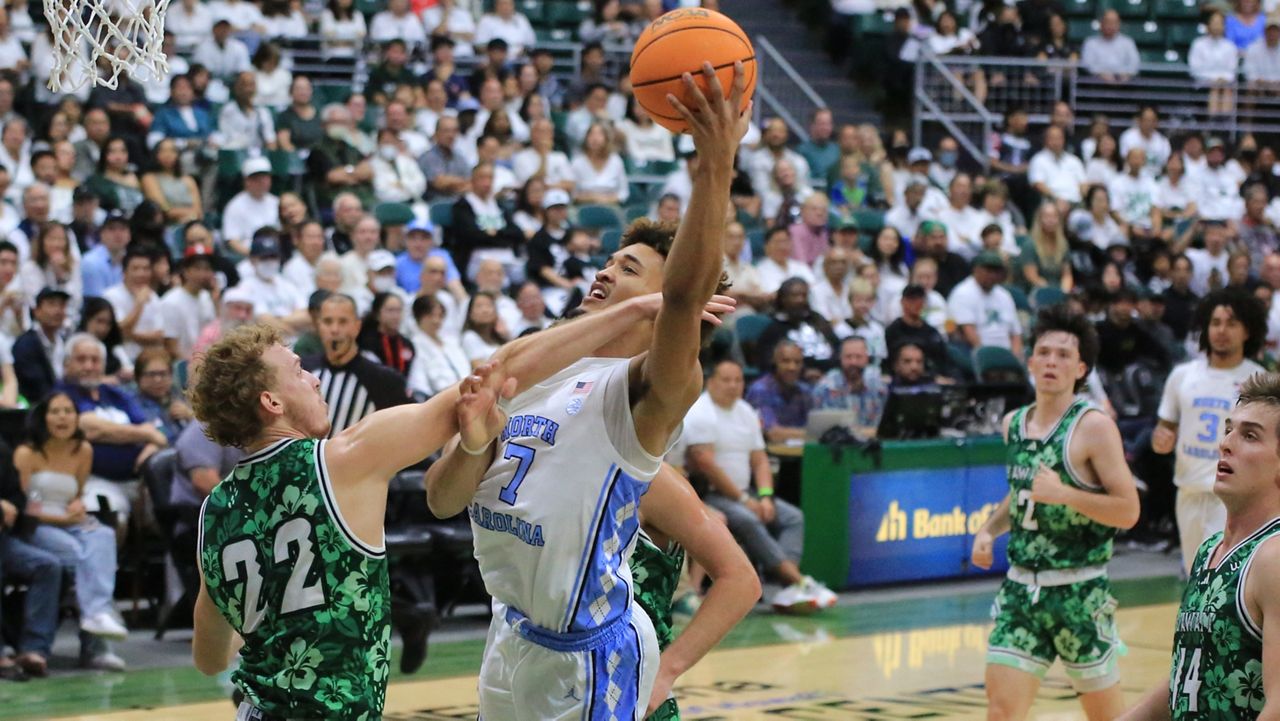Fashion
What Comes After Fashion’s Big Trump Reality Check

After Donald Trump’s resounding victory in the US presidential election on Tuesday, The Business of Fashion reached out to scores of fashion industry figures on both sides of the Atlantic for their reaction, including designers and models, CEOs and investors, and others. Despite this being arguably the most consequential election in a generation, only a handful agreed to speak on the record.
This is understandable – to a point. Some were in shock at the magnitude of Trump’s victory – he won the electoral college handily, but also the popular vote, which few pollsters or pundits had forecasted. This signified, as a New York Times headline put it on Wednesday, a “populist revolt against [the] elite’s vision of the US.” That’s no easy pill for fashion’s elites to swallow. Their bubble feels smaller and more tightly sealed than it did a few days ago.
Others are no doubt paralysed by fear of what’s to come over the next four years, or fear of retaliation from a future Trump administration. Conversely, some may be (quietly) sympathetic to Trump’s worldview, or desire to remain in the incoming president’s good graces, and fear cancellation by a predominately left-leaning young audience on social media.
We all deserve time to process, to weigh our options and to mourn if necessary. But come Jan. 20, Trump will be president again. If he sticks to even a fraction of his campaign promises, he will quickly usher in a host of policy changes that will have a direct impact on the fashion industry, its workers and its customers. The industry must be ready.
At the top of the list for the industry is his promise to slap tariffs on a wide array of imports. This would force most large fashion retailers to either move production to the US – impractical given the country’s limited garment manufacturing base – or raise prices. Trump has also vowed to roll back President Joe Biden’s climate change mitigation measures and introduce tax cuts. As a whole, Trump’s economic policies are being viewed by investors as a net positive, with shares soaring, many fashion stocks among them.
The second Trump administration’s effects won’t be contained to fashion’s bottom line, however. Trump’s campaign returned again and again to dark themes, with rallies peppered with racist rhetoric and vows of revenge against his enemies. These reached their apotheosis with his rally in New York’s Madison Square Garden, where a comedian called Puerto Rico a “floating island of garbage.”
How should the fashion industry respond? First, some introspection is necessary. Brands and industry insiders talk about shared values around tolerance, representation, the environment and more. But their track record in promoting those beliefs are not encouraging. Countless brands have in recent years touted sustainability programmes and their new DEI teams, only to backtrack as soon as they hit the slightest obstacle or backlash. In the wake of the election results, our reporters received numerous messages from racial minorities, immigrants and members of the LGBTQ community working in fashion, who questioned whether industry peers who were noticeably quieter in 2024 than they were in 2020 or 2016, truly shared commitments to progress and equity.
And, even when fashion does speak up, it’s not clear if anyone is really listening. Leading figures such as Anna Wintour and Tory Burch donated money to the Harris campaign, which played in its final weeks like a rolling, nationwide pop concert stacked with A-list celebrities. It doesn’t seem to have been convincing. Perhaps Joe Rogan has greater influence over his fans than Taylor Swift over hers.
“There’s no longer any room for fashion to bring us to a place of fantasy, outside of reality,” Willy Chavarria, a designer who regularly features immigrant stories in his work, told BoF. “Fashion is often where we go to escape, I don’t think we have that privilege anymore.”
The designer Elena Velez, who frequently breaks with fashion’s orthodoxy, including for her February show staging a talk around Margaret Mitchell’s “Gone With the Wind” that was decidedly anti-woke, had a different take on the same theme:
“The American culture machine has been facing obsolescence for a long time due to its inability to escape the coastal echo chamber,” the designer Elena Velez said in a statement. “The industry’s shock today around the overwhelming Trump victory shows what a poor job has been done to highlight diversity of perspective in the fashion industry.”
No doubt, there is an echo chamber in fashion, and too many believe their own hype that they’re single handedly solving society’s problems by selling clothes. But it would be taking the wrong lesson to decide this is the moment to revert to a “stick to business” framework – or to the comforts of the bubble.
Nevertheless, the industry must continue to push back against racism, homophobia and other forms of hate speech. While its efficacy in shaping the political discourse is debatable, fashion’s cultural reach is only growing as brands make inroads into sports, music, television and beyond. This platform has been used to amplify and advocate for concepts such as size inclusivity and trans rights, playing a small but important role in transforming them from underground causes to widely (though clearly not universally) accepted ideas.
And though many brands have dropped their sustainability targets and DEI goals, some are still plugging away on reducing waste, curbing emissions, improving conditions for garment workers and increasing representation of minorities in senior roles. That work shouldn’t stop just because the incoming administration is likely to be hostile to some of these aims.
There is also value, as Velez notes, in stepping outside the bubble rather than retreating into it at times like these. That doesn’t mean tolerating racism or misogyny. But fashion would be wise to listen to other signals those voters are sending: a CBS exit poll found 75 percent of voters described inflation as a hardship in the last year; 69 percent who described the economy as bad voted for Trump. A majority of men under 30 also voted for Trump, and are clearly not engaging with the culture that fashion is selling.
So take the time to process, and then start preparing. Use the coming months to be strategic about how the industry uses its voice. What values can fashion defend, what issues can it advocate for, and yes, what ways can it work with the Trump administration and engage with the voters who supported it.
THE NEWS IN BRIEF
FASHION, BUSINESS AND THE ECONOMY
Donald Trump elected US president in political resurrection. The result will sound alarm bells in foreign capitals given Trump’s chaotic leadership style and overtures to authoritarians. The fashion industry is bracing for aggressive tariffs on foreign-made goods that Trump has promised throughout his campaign.
LVMH acquires a minority stake in Our Legacy. The luxury conglomerate is investing in the cult Swedish menswear label through its venture capital arm. Our Legacy has built a €40 million business, multiplying its sales five-fold in recent years.
Ralph Lauren raises outlook, bucking luxury slowdown. The apparel retailer is forecasting annual revenue to increase between 3 percent to 4 percent. Ralph Lauren reported strong revenue growth in Asia in the most recent quarter, with sales in China up by what it said was a low-teen percentage increase.
Bulgari CEO sees China luxury market recovering in two years. The LVMH-owned jeweller has seen a more visible downturn this year in China at its brick-and-mortar stores versus online channels that can reach more customers. The forecast comes as luxury giants from Swiss watchmakers to fashion brands struggle to lure back Chinese consumers.
Hugo Boss says it won’t reach 2025 revenue and profit targets. Quarterly earnings before interest and tax were down 7 percent on the year at 95 million euros ($103.3 million). Hugo Boss said it continued to focus on cost control, especially around sourcing, to help profitability into the fourth quarter.
Farfetch owner Coupang’s retail sales miss estimates. Net sales totaled $6.14 billion, up from a year earlier but below analysts’ estimates of $6.24 billion. Operating income totalled $109 million, also slipping below projections.
Watch industry is failing to make models women want, survey finds. Women are increasingly shunning timepieces that target their gender, yet too many ads still include these types of watches, respondents said. Female clients could represent a significant opportunity for the industry at a time when it’s suffering a downturn in demand.
Warby Parker narrows losses and raises full-year revenue projections. The eyewear maker reported a 13 percent year-over-year increase in revenue to $192 million in the third quarter of the year. Warby Parker stuck to its formula of opening stores, where customer acquisition is cheaper than online ads.
Shein’s European entity reports 68 percent sales growth in 2023. Sales by Shein’s Ireland-registered entity Infinite Styles Ecommerce Co hit €7.684 billion ($8.36 billion). After-tax profit for the Dublin-registered entity more than doubled to €99.5 million from €45.8 million in 2022
Blackstone in talks to acquire Retail Opportunity Investments Corp, sources say. ROIC owns over 90 shopping centres in the US. Blackstone is likely to prevail in the auction for ROIC that also attracted interest from other private equity firms, including Bain Capital.
Fast-fashion retailer Groupe Dynamite hires bankers for IPO. The Canadian retailer of women’s clothing is working with major Canadian financial institutions and a US bank on the offering. The IPO may value the Montreal-based company at C$1 billion or more.
US retailers import fewer Christmas goods ahead of tepid holiday season. Imports of holiday products by US retailers, including Walmart, have fallen sharply. The drop reflects cautious inventory management and expectations for slower sales growth during this year’s festive season.
UK retail sales growth slumps as shoppers wait for Black Friday deals. Sales grew by 0.6 percent year-on-year in October, significantly weaker than September’s and less than half the three-month average growth rate. Fashion sales took the biggest hit as mild weather deterred spending on winter clothes.
California passes tough-on-crime measure backed by big retailers. Voters rolled back key elements of the state’s landmark criminal justice reform, reflecting mounting frustration over brazen retail thefts and open-air drug use. Now, individuals with two prior theft-related convictions can face up to three years in prison for stealing small amounts of goods.
THE BUSINESS OF BEAUTY

E.l.f beauty lifts annual forecasts on resilient cosmetics demand. Customers, who have been hunting for lower-priced makeup and skincare products, helped boost Elf’s sales in a challenging market. Elf expects net sales in the range of $1.32 billion to 1.34 billion, compared with its prior forecast of $1.28 billion to $1.30 billion.
Shiseido lowers full-year forecast as China slump persists. The company reported on Thursday a 26 percent decline in core operating profit over the first nine months of this year. Net income in the third quarter came in at ¥739 million ($4.8 million).
Coty sees annual profit at the low end of forecast as mass beauty demand slows. Coty is also facing tight inventory management by retailers globally, while in the United States the company is grappling with soft sales at drug stores and pharmacy chains. Its quarterly net revenue rose nearly 2 percent to $1.67 billion, compared to estimates of $1.68 billion.
Kenvue’s weak sales give power to activist push. Organic sales rose 0.9 percent in the three months ended Sept. 29. Kenvue is also facing pressure in China, where the company has said weak shopper sentiment has hurt its business.
The Vitamin Shoppe owner files for bankruptcy. Franchise Group Inc., filed under Chapter 11 in Delaware, listing almost $2 billion of debt, according to court documents. The company said in a statement it has struck a deal with lenders that own most of its senior debt.
PEOPLE

Valérie Leberichel to join Gucci as communications chief. Leberichel is joining from Givenchy, where she has been the global communications VP since 2022. She previously held communications roles at Prada and Miu Miu, where she worked closely with Gucci’s new CEO Stefano Cantino.
Compiled by Yola Mzizi.









